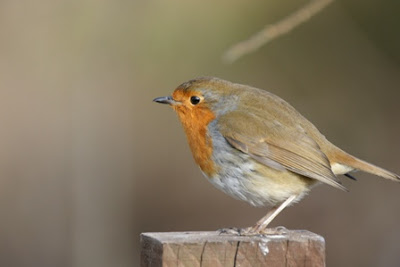 |
| The brown hare |
We have lost somewhere near 150,000 miles of hedgerows in the past 50 years to accommodate larger machinery and high single crop yields, this deprives the hare of food and shelter. Thus the hare has suffered as they prefer a patchwork of year round opportunities to graze on herbs and grasses.
The declines have been felt worst in the west of the country but even in the east and its rich arable lands the declines have been seen where arable practices have excluded agri-environment options.
Replanting hedgerows, not flailing existing ones to an inch of their lives and most importantly leaving field margins definitely improve the hare’s lot.
 |
| Top speed 50km/hr, this one is still in second gear it hasnt even bothered to flatten its ears yet |
Steeped in folklore the hare most commonly seen in the UK is the brown hare but we also have two other species in the British and Irish isles. The blue or mountain hare found mainly in Scotland but also present in small numbers in the Peak District; we also have the Irish hare which is remarkable in being probably one of the oldest residents of these Isles, being present in the fossil record for up to 60,000 BP.
In Northeast we only have the brown hare although many years ago there were reports of mountain hare in the Cheviot's, I did see one I suspected of being a mountain hare at distance about 15 years ago but I'm really not sure now.
 |
| Boxing hares in April |
 |
| Sitting still in the stubble |
I saw my first hares this past week, about a half a dozen of them sitting around on some left over winter stubble looking like ancient megaliths dotted morosely around in a loose grouping. Every so often there was a burst of energy as the males would chase each other whilst a bout of boxing was from the females trying to beat off their would be suitors. They used to think it was all males that carried out these bouts of pugilism but now it is known to be mainly females that do the boxing, the males just chase each other with the occasional handbags at thirty paces.
 |
| Now this one is shifting |
The origins of the Easter bunny do not lie in a doe eye rabbit it originates from ancient Celtic beliefs and customs, it was hijacked by early Christians and later generations did away with the goat eyed hare (the devil incarnate) in favour of the fluffy bunny rabbit but its presence in our culture is eternally ingrained in many a place name.
Just to the northwest of Morpeth lie the hamlets of Harelaw and Haredene which are next to Doe Hill Farm. These names all originate from the ancient presence of the hare and today these are still good locations to see hares and a sharp lookout from the car window in those vicinities will often be rewarded with a view of a hare sitting in a field.
 |
| The rear end of a departing hare |





 Rise early or stay out late and these might be your rewards
Rise early or stay out late and these might be your rewards Geese in a solway sunset
Geese in a solway sunset
 Young stoats at play
Young stoats at play
